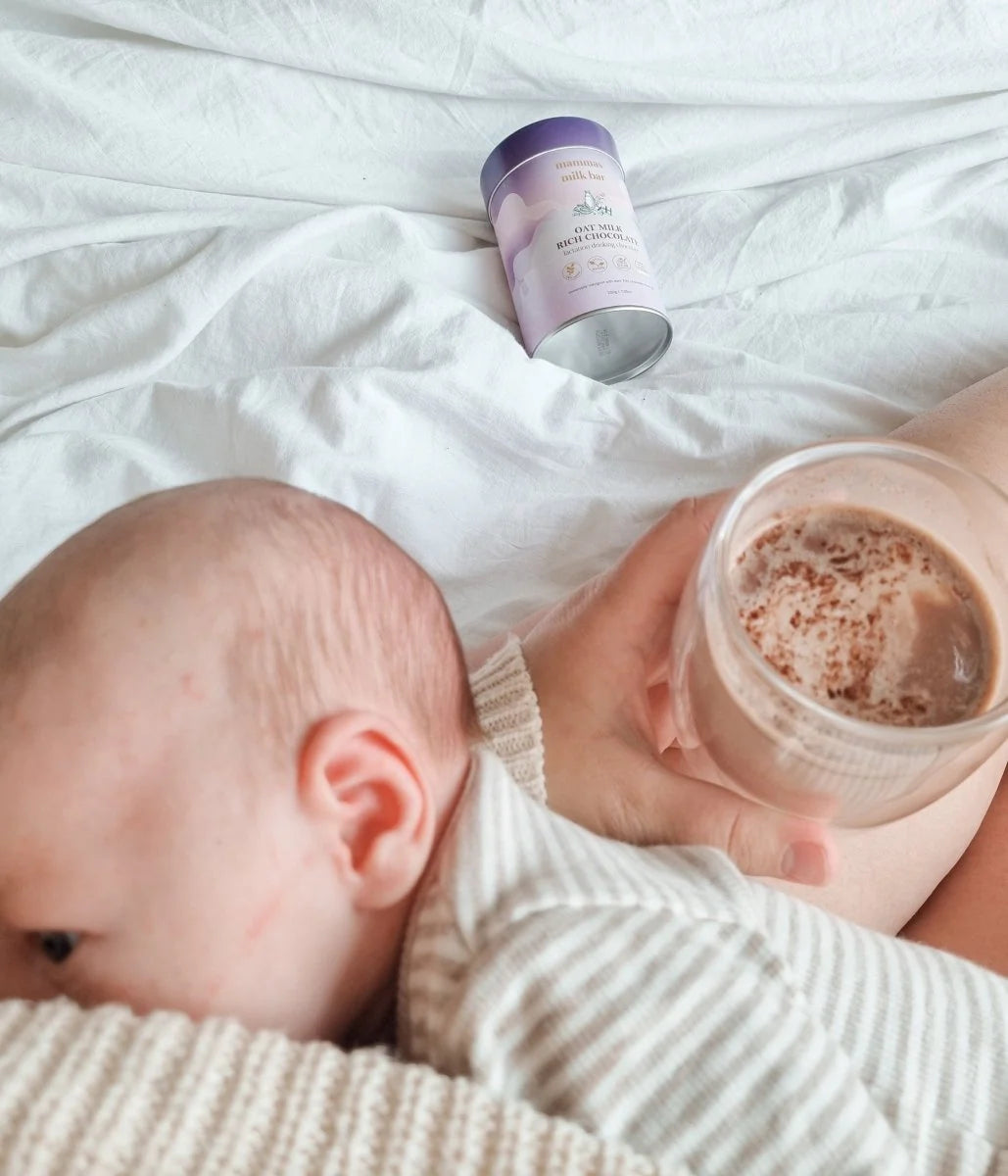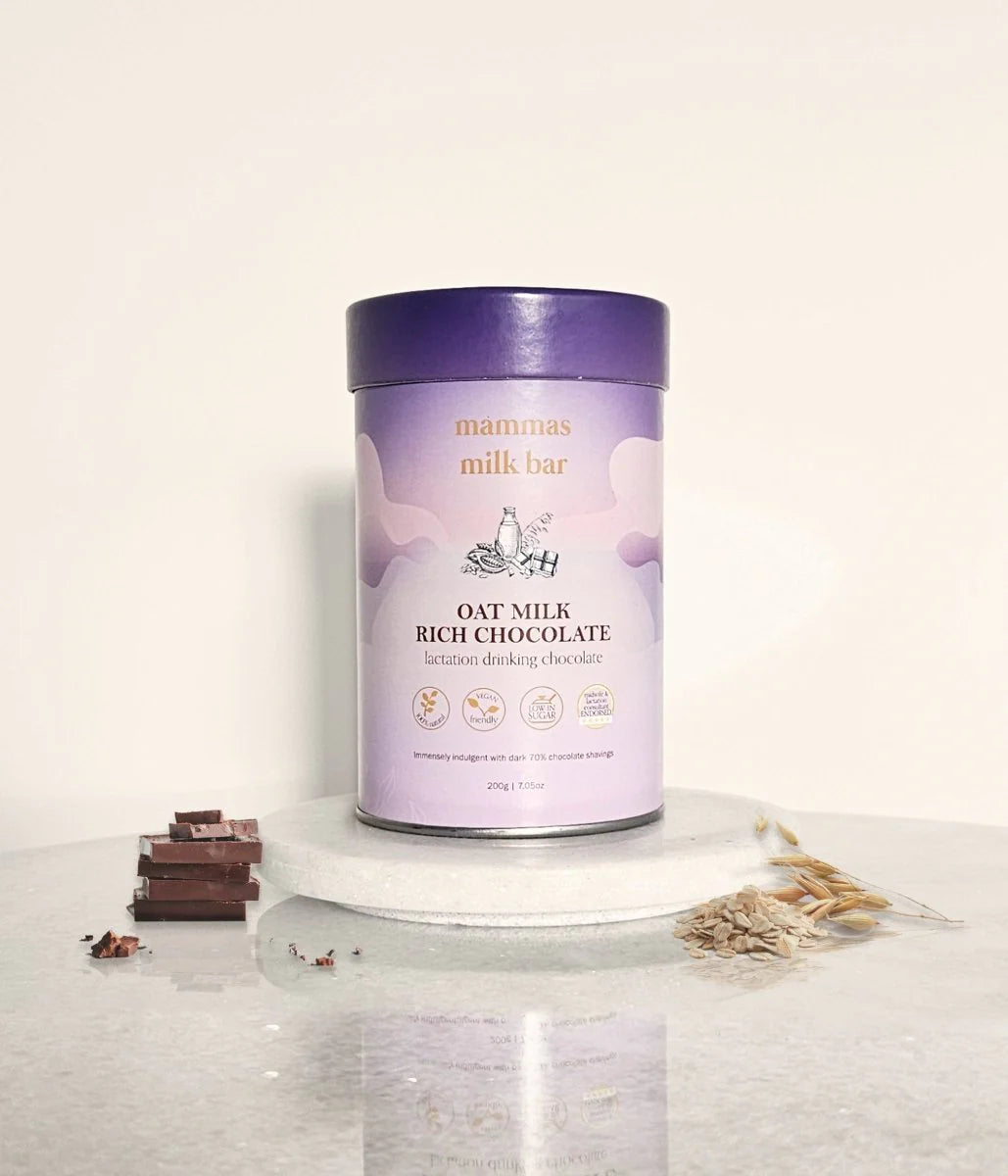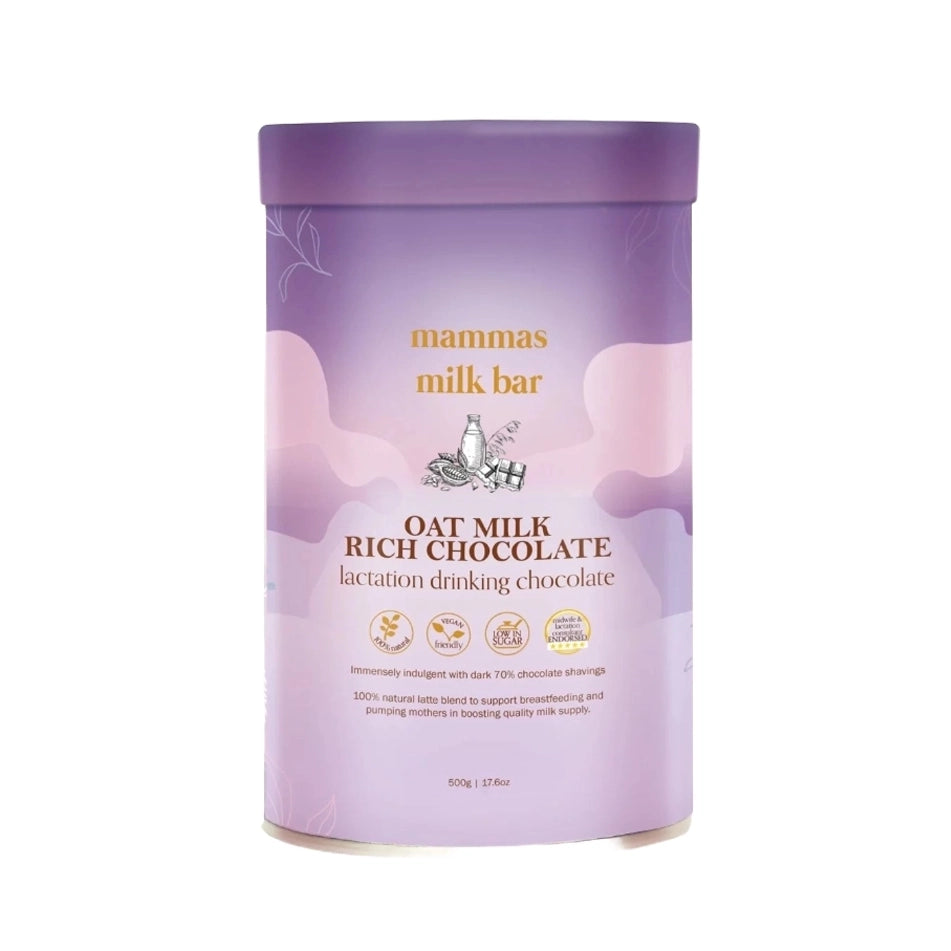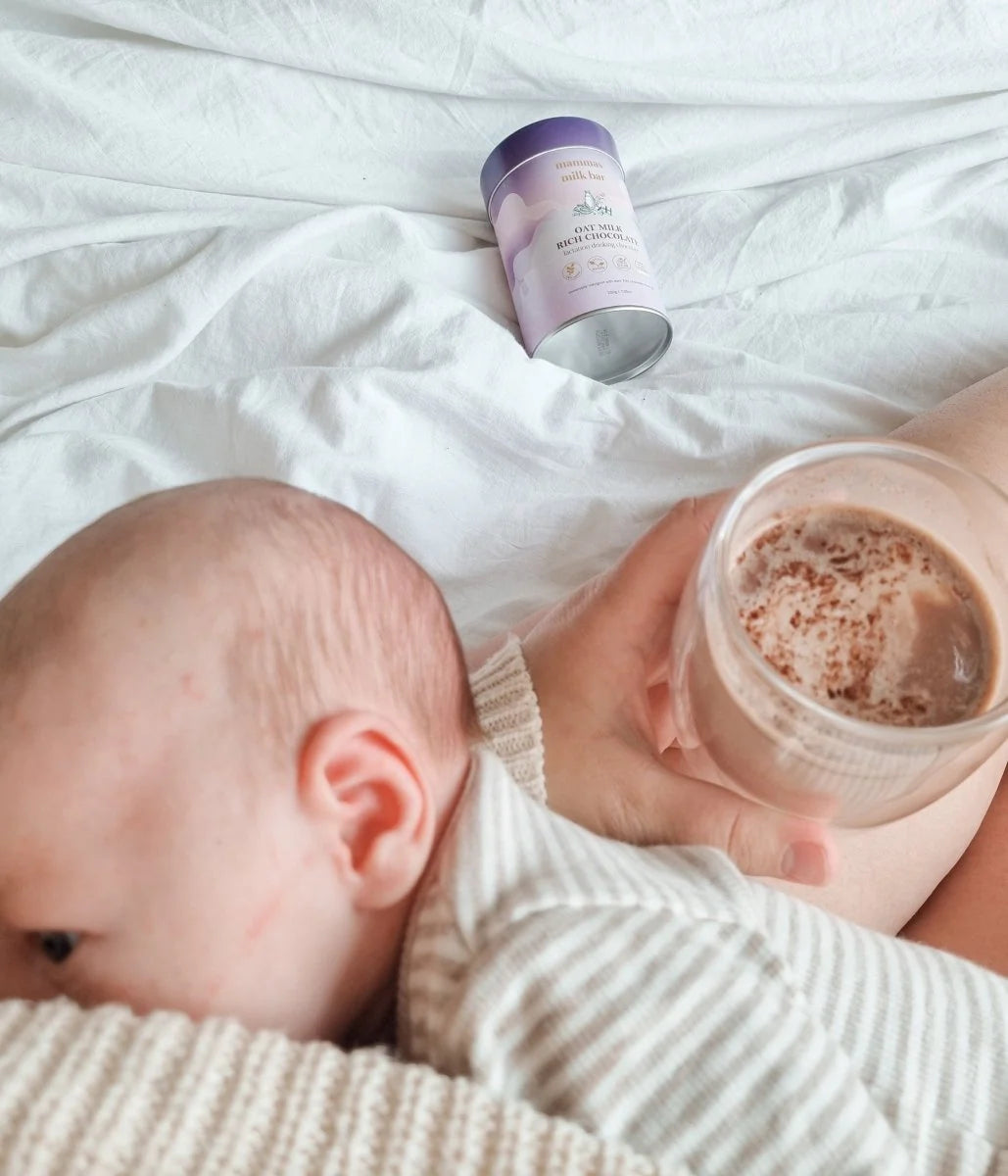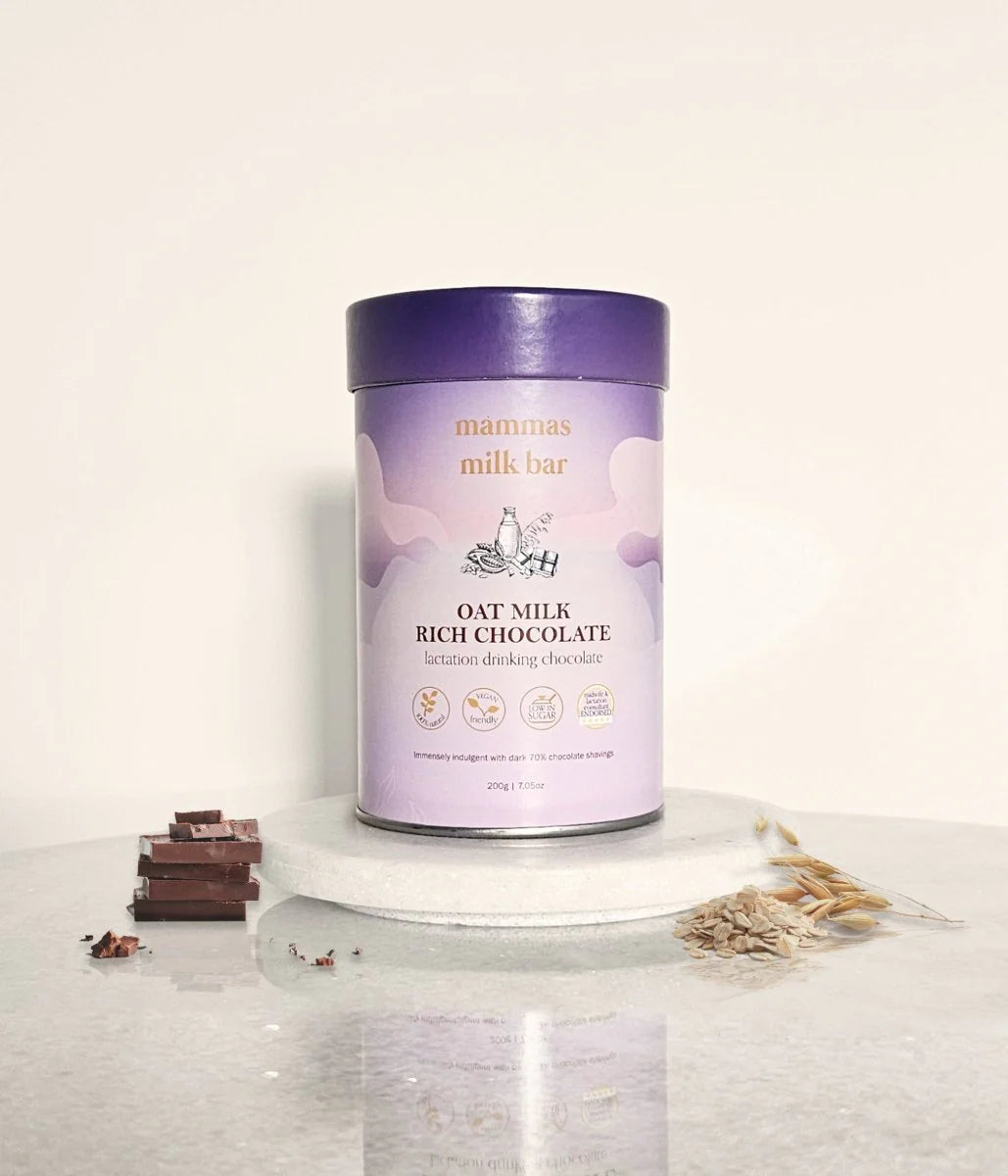Oat Milk Rich Hot Chocolate
Oat Milk Rich Hot Chocolate
SKU:MMBHC-OM
Clothing Prem to 18 Months
| Size | Age Guide | Weight | Height |
|---|---|---|---|
| Premature | Premature or Small Newborn | Up to 4Kg | Up to 55cm |
| Newborn | 0-3 months | 4-6Kg | Up to 62cm |
| 3 Month | 3-6 months | 6-8Kg | Up to 68cm |
| 6 Month | 6-12 Month | 8-10Kg | Up to 76cm |
| 12 Month | 12-18 Month | 10-12Kg | Up to 84cm |
| 18 Month | 18-24 Month | 12-14Kg | Up to 92cm |
Clothing 2 to 6 Years
| Size | Age Guide | Height | Chest | Waist | Hip |
|---|---|---|---|---|---|
| 2 Year | 2-3 Years | Up to 100 cm | 56 | 51 | 58 |
| 3 Year | 3-4 Years | Up to 105 cm | 58 | 53 | 60 |
| 4 Year | 4-5 Years | Up to 110 cm | 60 | 55 | 62 |
| 5 Year | 5-6 Years | Up to 115 cm | 62 | 57 | 64 |
| 6 Year | 6-7 Years | Up to 120 cm | 64 | 59 | 66 |
Beanie Size Guide
| Size | Head Circumference | Age Guide |
|---|---|---|
| Premature | 31-35 cm | Premature or Small Newborn |
| Newborn | 35-40 cm | Newborn |
| Small | 40-43 cm | 3-6 Months |
| Medium | 43-47 cm | 6-18 Months |
| Large | 47-52 cm | 18-3 Years |
Sunhat Size Guide
| Size | Head Circumference | Age Guide |
|---|---|---|
| Newborn | 37-40 cm | Newborn |
| Small | 40-43 cm | 3-6 Months |
| Medium | 43-46 cm | 6-12 Months |
| Large | 46-49 cm | 12-24 Months |
| Xtra Large | 49-54 cm | 2-4 Years |
Sleep Pods Size Guide
| Size | Weight | Age Guide | Measurement(Back to Hem) |
|---|---|---|---|
| Newborn | 0-6 kgs | 0-3 Months | 60.5 cm |
| Small | 0-8 kgs | 3-6 Months | 66 cm |
Booties Size Guide
| Size | Age Guide |
|---|---|
| Newborn | 0-3 Months |
| Small | 3-6 Months |
| Medium | 6-12 Months |
| Large | 12-18 Months |
Pretty Brave Baby
| Foot Length (mm) | Insole Length (mm) | EU | UK | Age | INT |
|---|---|---|---|---|---|
| 95-104 | 110 | 16/17 | 2 | 0-6m | S |
| 104-114 | 118 | 18 | 3 | 6-12m | M |
| 114-123 | 127 | 19/20 | 4.5 | 12-18m | L |
| 123-137 | 142 | 21/22 | 5.5 | 16-22m | XL |
Pretty Brave 1st Walker
| Foot Length (mm) | Insole Length (mm) | EU | UK | Age |
|---|---|---|---|---|
| 114-120 | 125-128 | 19 | 3 | 1 yr |
| 120-126 | 132-135 | 20 | 3.5 | 1-2 yrs |
| 126-132 | 138.5-141.5 | 21 | 4.5 | 1-2 yrs |
| 132-138 | 145-148.5 | 22 | 5 | 2 yrs |
Crywolf Swim Nappy
| Size | Length (waist to crotch) | Crotch Width (side to side) |
|---|---|---|
| 0-1 yr | 1-2 yrs | |
| 37 | 38 | |
| 14.5 | 15.5 |
Crywolf Rash Suit
| Size | Length (back neck to crotch) | Chest (arm to arm) | Waist (side to side) | Sleeve (neck to cuff) | Neck Opening(diameter) |
|---|---|---|---|---|---|
| 6-12 Months | 1 yr | 2 yrs | 3 yrs | ||
| 40 | 42 | 44 | 46 | ||
| 25 | 26 | 27 | 28 | ||
| 24 | 25 | 26 | 27 | ||
| 30 | 31.5 | 33 | 34.5 | ||
| 13.25 | 13.25 | 13.8 | 14.3 |
In stock
Couldn't load pickup availability
Overview
Overview
We asked our amazing community and village of mums what flavour they would absolutely love to see. And wow, the suggestions for new flavours flew in with the most popular request being Oat Milk Rich Drinking Chocolate at the top of the list! So create it we did...
We've combined 70% decadent vegan chocolate shavings with freeze dried oat milk, along with a good dash of superfood and super galactagouge shatavari to help balance your hormones and give you the most decadent drinking experience for you and your baby!
You get chocolatey goodness, your wee babe is fed with the best milk ever (YOUR breastmilk!) and you have two warm bellies in the house.
Mammas Milk Bar Lactation Oat Milk Rich Chocolate is VEGAN! Perfect for the cold weather, snuggle up with a cup of us.
Our delicious drinking Lactation Oat Milk Rich Chocolate is blended with premium dutch Cocao Powder, and galactogogues superfoods ingredients such as shatavari & oat to support breastfeeding, pumping mothers in boosting breastmilk supply.
Packed with 100% yummy natural ingredients, we use only premium ingredients in Mammas Milk Bar Lactation Products and are Proudly made in New Zealand.
Our lactation hot chocolate is Vegan Friendly, Wheat Free, Dairy Free. Nut Free. Soy Free
Technical Specification
Technical Specification
Delivery and Returns
Delivery and Returns
- Delivery: Free within NZ on orders over $100 (excluding bulky items) or $8 standard shipping
- Returns: Accepted within 14 days of receipt with proof of purchase
- Some items are excluded from returns including sale items, hardware, car seats, prams, monitors and personal items - please click here for the full list.
Share this product
Recently Viewed Products
Related Blogs
Breastfeeding Basics and Tips
Understanding the Fundamentals of Breastfeeding Breastfeeding might seem straightforward, but many new moms find it challenging. Patience is essential, and being well-prepared can make the process smoother. Here, we break down the basics to help you get ready for this journey. The Three Stages of Breast Milk Colostrum: The First Stage When your baby is born, your body produces colostrum, a clear or yellowish liquid packed with nutrients, proteins, and vitamins. This small amount is perfect for newborns, helping to protect their digestive tract and immune system. Transitional Milk: The Second Stage Regular breastfeeding will stimulate the production of transitional milk, which appears around the third to fifth day. It looks like a mix of milk and orange juice, rich in lactose, fat, and calories. Mature Milk: The Third Stage By the second week, mature milk replaces transitional milk. This pale, sometimes bluish milk provides all the nutrients, fat, and proteins your baby needs, adjusting its water content in hot weather and boosting antibodies when needed. Achieving a Good Latch Proper latching is crucial to prevent discomfort. A good latch covers both the nipple and the areola and shouldn't be painful. Here’s how to ensure a successful latch: Positioning Your Baby Hold your baby tummy-to-tummy with your breasts, keeping their head aligned with their body. Mouth to Nipple Tickle your baby’s lips with your nipple or express a bit of milk to encourage the rooting reflex. When your baby opens wide, bring them to your breast. Ensuring Proper Attachment A proper latch involves the baby’s chin and nose touching your breast. If necessary, adjust the bottom lip to ensure it isn’t tucked in. Watch for a steady suck-swallow-breathe pattern. Trying Different Positions If you encounter difficulties, experiment with different breastfeeding positions like the football hold or side-lying. Consult a lactation consultant if needed. Maintaining Comfort and Milk Supply Relax and Feed on Demand Stay calm and relaxed to enhance milk production. Allow your baby to feed without time limits, ensuring one breast is fully drained before switching to the other. Recognizing Hunger Cues Signs of hunger include nuzzling your breasts, rooting, sucking on hands or clothing, and making lip-smacking noises. Crying is a late hunger cue. Feeding Frequency Newborns typically feed 8-12 times a day. Some may need to be woken up for feeds if they sleep for more than six hours. Patience and Persistence Breastfeeding takes time and practice. Be patient with yourself and your baby, seeking professional help if needed. With time, breastfeeding will become more natural and enjoyable for both of you. By following these tips, you can create a calm and successful breastfeeding experience, eventually making it look effortless.
Learn moreMotherhood: Beyond the Fourth Trimester
Beyond The Fourth Trimester - A Sustainable Approach To Health Once the first few months with your new baby have passed you might be feeling like the haze of those early weeks has passed. You also might not be there just yet, just as each baby is different so is each pregnancy and the subsequent postpartum period. This is why it is important to be mindful of not judging how well you are doing based on other mothers who might appear to be completely back to normal with a baby who sleeps all night. If you are still breastfeeding, many mothers report a drop in milk supply at this point often saying that they no longer feel like their breasts are as full. This is something I experienced with my first baby and thought it meant I was losing my milk supply. It is normal for the initial fullness and engorgement to diminish as your milk supply is more established at this point, and your body has adjusted to supplying what your baby needs. If you do ever feel concerned by this your Plunket nurse, local lactation consultant or the La Leche league are a wonderful source of support & encouragement. Once those exhausting early months have passed many of the mothers I work with are keen to start focusing on reclaiming their pre-pregnancy bodies and to start dieting and exercising. Focusing on good nutrition and consistent exercise is hugely beneficial and has many positive health impacts such as increased energy, better sleep, improved mood and changes in body composition. What is really important to be mindful of, is that changes in diet and physical activity are best to be done with an incremental approach to minimise the chances of under-fuelling yourself, drops in milk supply, injuries and adding too much pressure on yourself. It also allows you to build sustainable health habits that you are more likely to maintain long term. I always recommend an appointment with a postpartum trained physiotherapist. They can assess your posture for diastasis recti (tummy muscle separation) and guidance on pelvic floor exercises. Women who have had caesareans often think because they haven't had a natural birth they don't need to worry about pelvic floor exercises - this isn't the case, pregnancy still takes its toll on the body so re-strengthening the pelvic floor after carrying a baby is important for all mothers. Working with a personal trainer that specialises in postpartum exercise is a great idea. They can ensure your exercise technique is correct to avoid injury and set an exercise program that is suitable for your current fitness level that will be mindful of the changes that need to be made to a fitness program based on your requirements postpartum. When looking at dieting I always encourage my Mum’s take a non-diet approach to focus on improving health not through restriction but with healthy nutritional choices that improve their health status not diminish it. To achieve this we focus on a nutritional approach that has a strong focus on nutrient repletion to help the body to replete nutrients that were preferentially supplied to their growing baby. Focusing on a diet full of whole unprocessed foods is the foundation for this. Most women find that this approach is very empowering, it leads to better satiety and self-regulation of eating over restriction then binge eating. When it comes to improving your diet always aim for progress, not perfection, and most importantly enjoy your meals! Adequate protein intake is essential for tissue repair and rebuilding especially when exercising. Sources of protein include meat, chicken, seafood, eggs, legumes nuts and seeds. Protein also helps to keep you feeling full for longer. I use and recommend Clean Lean Protein powder for smoothies as it is perfectly safe for breastfeeding mums. You can use the discount code ‘mela’ to save 15% at nuzest.co.nz . Eating plenty of colourful vegetables and some fruits (eat the rainbow!) is important to supply essential vitamins, minerals, phytonutrients, fibre and carbohydrate. I aim to have three fist-sized servings of vegetables with lunch and dinner. It is important to supply yourself with some complex carbohydrate for energy and to assist with glycogen repletion after exercising. Some good sources are pumpkin, yams, kumara, and whole grains such as brown rice and quinoa. Don't forget to incorporate healthy fats with each meal. Fats have been demonised and avoided for so long that many people are not aware of how important adequate fat intake is for health. Dietary fat is essential for the absorption of many nutrients, production of certain hormones, the supply of energy and support of cell growth. Good sources of healthy fats include oily fish such as salmon, extra virgin olive oil, hemp seed oil, avocado, nuts and seeds. Lastly don't forget to drink your water! Aim for two glasses on rising then another 2 litres throughout the day and more when exercising. If you are a breastfeeding mum aiming to have a glass of water with each feed I find keeping a water bottle close by during the day and for those night feeds is a great idea - it’s thirsty work! Kylie Stowe @melawholefoods Postpartum Nourish Bowl Serves 1 Ingredients 120-150 grams of cooked sliced meat (or vegetarian alternative) 2 cups of salad greens 1 cup of an assortment of diced colourful vegetables 1 palm-sized serve of cooked complex carbohydrate (pumpkin, yams, brown rice, quinoa, kumara) ¼ - ½ of an avocado or 40 grams of Feta 1 tbsp of hummus 1tbsp toasted pumpkin & sunflower seeds 2 tbsp of dressing of your choice. Method Arrange all of the ingredients in a bowl, season, drizzle with dressing and enjoy! My favourite dressing is made with extra virgin olive oil, apple cider vinegar & wholegrain mustard. To change up the flavours you can coat your protein in different herbs and spices the one pictured is Moroccan chicken.
Learn moreTrouble Shooting Breastfeeding Issues
When Breastfeeding Gets Tough: What You Can Do Many new mums set out hoping to breastfeed, but once baby arrives, things don’t always go as planned. Painful feeds, engorgement, latch troubles, low supply, clogged ducts, and infections – there are plenty of common hiccups that can make breastfeeding harder than you expected. Add in sleep deprivation, postpartum recovery, and all the well-meaning voices around you, and it’s easy to feel overwhelmed if feeding isn’t going smoothly. If you decide to supplement or switch to formula, there’s no shame in that – a fed baby and a supported mum are what truly matter. But if your heart is set on breastfeeding, the good news is most challenges can be worked through – and often, they’re only temporary. You've got this. Here’s a gentle guide to some of the common hurdles and how to help overcome them: 1. Engorged Breasts When your milk comes in a few days after birth, your breasts may suddenly feel hard, heavy, and tender – this is normal. It’s your body adjusting to baby’s needs. Engorgement usually settles down as milk supply begins to regulate, but it may crop up now and again if you go longer between feeds. What can help: Feed often, even if it’s just a little. If your breasts are too full for baby to latch, try hand expressing a bit first to soften the area. Cold compresses and gentle massage can bring relief. We stock some amazing inserts from Bare Mum which you can pop into your bra to help soothe the area. Some mums also swear by popping chilled cabbage leaves inside their bra between feeds – it’s an old remedy, but surprisingly soothing. 2. Latch Issues A bit of discomfort at the start of feeds is normal, especially in the early days. But if you're experiencing sharp or lasting pain, your baby might not be latching deeply enough. A shallow latch can press your nipple against the roof of their mouth, making it painful for you and less effective for them. What can help: Encourage a wide open mouth by gently rubbing under baby’s chin. Position them with their nose opposite your nipple, then bring them to you (not the other way around). A good latch usually means your baby’s mouth is wide, their chin is tucked into your breast, and your nipple is deep inside. If pain persists or your baby still can’t latch comfortably after a week or two, reach out to your midwife or a lactation consultant. Sometimes structural issues like tongue-tie can make latching difficult, and professional help can make all the difference. 3. Cracked or Bleeding Nipples It sounds scary, but many mums experience cracked or sore nipples in the first week or two. It can happen due to a shallow latch, overuse of a pump, or simply your skin adjusting to feeding. What can help: Use a nipple cream after each feed to soothe and heal. Hydrogel pads can bring instant cooling relief. Taking a mild pain reliever like paracetamol before feeds can help too. Most importantly, check baby’s latch – and ask for help if your nipples aren’t healing. Here are two of our favourite products to help you through: Pure Mama Nipple Butter and Silverette Cups these two in combination with each other should help you heal faster and stay protected. 4. Low Milk Supply It’s common to worry about supply, especially in those early weeks when baby seems to feed non-stop. But frequent feeding, short feeds, and night wakings are all normal and don’t usually mean you’re not making enough milk. True low supply is rare, but if your baby isn’t gaining weight or has very few wet nappies, it’s worth talking to your midwife or GP. Sometimes birth complications or certain medical issues can affect milk production. What can help: If baby is showing signs of dehydration, it’s important to get help quickly. Your healthcare provider may suggest medication or a feeding plan. If you’ve been given the all-clear but still want to increase your supply, try pumping between feeds, eating milk-boosting foods like oats and fennel, or treating yourself to some tasty lactation cookies or this delicious lactation blend. 5. Inverted or Flat Nipples You might not have thought much about your nipple shape before baby arrived – but inverted or flat nipples can make latching trickier. If your nipple pulls inward when gently pinched, it may be inverted. What can help: Most mums with inverted nipples are still able to breastfeed with the right support. Talk to your midwife or lactation consultant – they may suggest trying a nipple shield or using a breast pump briefly before feeding to draw the nipple forward. 6. Blocked Ducts A blocked duct feels like a hard, sore lump under the skin. It usually happens when milk isn’t draining well – perhaps due to a skipped feed or a tight bra. What can help: Keep milk flowing by feeding often on the affected side. Apply a warm compress before feeding and gently massage the lump toward the nipple. Most clogs clear within a day or two. 7. Mastitis If a blocked duct doesn’t clear or if bacteria enters through a cracked nipple, it can cause mastitis – a breast infection. You may feel feverish, achey, and have a red, painful area on your breast. What can help: Mastitis needs medical treatment, so see your GP for antibiotics. Keep feeding or pumping often – it might be sore, but emptying the breast helps you recover faster. Warm or cool compresses between feeds can ease the discomfort. 8. Thrush This yeast infection often begins in baby’s mouth and spreads to the breast. It can cause sharp, shooting pain and red, shiny, itchy nipples. What can help: Thrush won’t go away on its own, so you’ll need to see your GP for antifungal medication for both you and baby. It’s important to treat both of you at the same time to stop it from bouncing back. You Are Not Alone – and You’re Doing Great! Before baby arrives, breastfeeding can feel like it should come naturally – and for some, it does. But if you’re finding it hard, you’re not doing anything wrong. Many new mums face bumps in the road, and most find they only need support for a short time before things click into place. For others, despite trying everything, breastfeeding may not work out – and that’s okay too. You haven’t failed. Formula feeding is a perfectly valid option, and many babies thrive on it. What matters most is that your baby is fed, loved, and cared for – and you’re doing an incredible job. Don’t hesitate to ask for help – whether it’s from your midwife, GP, a lactation consultant, or another mum who’s been through it. And if you don’t feel listened to, keep asking. The right support can make all the difference ❤️
Learn moreMatrescence - The Birth of a Mother
Written by Kylie Stowe @melawholefoods Matrescence - The Birth of a Mother The first few months postpartum are beautiful and gruelling all at the same time. This transformative phase in a woman's life is referred to as Matrescence, or the fourth trimester. Not only has a new baby been born, but so have you - the new mother. The expectations of the modern mother are often overwhelming, we are expected to get back to ‘normal’ as fast as possible, to cook, clean, entertain guests, breastfeed, attend coffee groups, get back in shape and return to work as soon as possible. All while navigating the new role of motherhood, healing postpartum, bonding with our beautiful new baby and making time for the other relationships in our life. This often leaves new mothers exhausted and at times feeling like they are failing. Many traditional cultures approach this postpartum period in a vastly different way. It is a time where the new mother stays home and is cared for, she is given the time and space to rest, recuperate, heal, nourish and bond with her new baby. The new mother is fed warming and nourishing meals such as soups and tea which assist in healing and establishing a healthy milk supply, this often continues for at least the first forty days postpartum. Being a mother of four myself and living away from our families, the early postpartum phase was at times really hard and lonely. As much as I would have loved to have 40 days of being cared for, it just wasn't realistic or possible. I thought about this a lot, knowing this is the same for many of the mothers I work with. With this in mind I considered ways I could nurture myself and my new baby. Good nutrition is hugely important for healing post birth and to support the radical shift in hormones, sleep deprivation and subsequent exhaustion. As a pregnant woman it is common to stay well-nourished during pregnancy when you are growing a baby, yet incredibly common for a new mother to start dieting soon after birth to get her body back. One thing I always like to remind new mothers who are breastfeeding is that you are still nourishing a baby, they are just outside of your womb now. Nutrient intake is still just as important in the postpartum phase as it was during pregnancy, a mother's nutrient status directly affects milk quality and quantity and her own wellbeing. This highlights the importance of not restricting food intake but instead focusing on a diet rich in nutritious whole and unprocessed foods. In the last blog post I spoke about the importance of meal preparation, it really is a life saver in those early months to ensure you are adequately fuelled. Take family and friends up on the offers of meals, babysitting older children and housework. You do not need to do it all, I found personally, that some of the most unrealistic expectations were the ones I placed on myself. During those early months focus on warming slow cooked meals, such as casseroles, stews, broths and soups, these are nutrient packed and easy on the digestive system. The early postpartum weeks are a nutritionally expensive time where you are recovering from pregnancy, labour and birth, which is comparative to running a marathon, and also possibly healing from a caesarean or episiotomy. Your nutrient and calorie requirements are actually higher now than they were during pregnancy. This is also an incredibly important time to stay adequately hydrated, as a rule I made sure that every time I breastfed my baby I would have a glass of water or breastfeeding tea (I love Artemis breastfeeding tea) then once a day would have a lactation smoothie and warm cup of bone broth (the Nutra Organics powder is really convenient). Incorporating all of these different things means you get the added benefits of nutrients and fluid to help you stay hydrated and nourished. You will probably be told countless times to sleep when your baby sleeps. This can be really hard when you can think of a million other things to do - hello warm shower and hot cup of coffee! But it really is important to get in as much rest as possible because the prolonged sleep deprivation really does catch up on you eventually. If you find you really struggle to nap you could try a short guided meditation to relax and take some time to simply breathe, the Headspace app is great for this and offers short 3-5 minute guided meditations. The recipes in the previous blog posts are great for this postpartum period. The recipes that follow are great quick options for breakfast that can be prepared in advance and kept in the fridge to just grab when needed. From one mother to another don’t forget just how important it is to care for yourself as you do your baby. As the saying goes you can’t pour from an empty cup. If you are interested in a deeper look into the importance of this postpartum phase I highly recommend the book ‘The First Forty Days: The Essential Art of Nourishing the New Mother’ it is also packed with lots of nutrient rich yummy recipes. Kylie Stowe @melawholefoods Overnight Cinnamon & Apple Oats Serves 1 Ingredients 1c unsweetened coconut & almond milk 1 Tbsp almond butter 1/2c uncooked steel-cut oats Pinch of cinnamon Pinch Himalayan salt 1 scoop of Nuzest Vanilla Clean Lean Protein (safe in pregnancy & breastfeeding) ½ a grated apple Toppings 2 tbsp blueberries 1 tbsp of hemp hearts 1tbsp of toasted almond slices Method In a bowl whisk together the nut milk, nut butter, protein powder, cinnamon until smooth. Mix through the oats, apple, salt, and any other optional additions and put into a mason jar or container with a lid and refrigerate overnight. Remove from the fridge, you can gently heat this or serve it cold. Additionally prior to serving you can top with hemp seeds, almonds and blueberries if desired. The protein powder is available at www.nuzest.co.nz use the Code Mela at checkout for a 15% discount. Lactation Smoothie Serves 1 Ingredients 1c unsweetened coconut & almond milk 2 tbsp greek yoghurt 2 scoops of Clean Lean Protein 2 tbsp of steel cut oats 1 tbsp of brewer’s yeast 1 tbsp LSA ½ a banana ¼ c of blueberries Method But all of the ingredients into a blender and blitz.
Learn more


